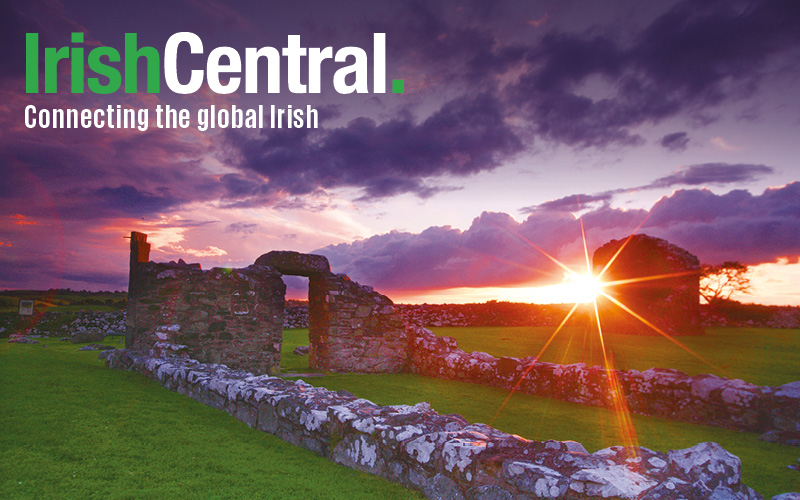In establishing Ireland’s newest political party earlier this year, the founder of Renua, former Fine Gael TD Lucinda Creighton, made one thing clear.
“I consider the old paradigms of left and right completely redundant,” Creighton said in January. “As far as I’m concerned, the right-wing model of an overriding free market has completely failed and, equally, I don’t think I need to explain how socialism has failed in the latter part of the last century.”
According to a new book, Creighton’s professed belief in the obsolescence of the political spectrum – interpreted variously by analysts and commentators – tallies almost exactly with the Irish electorate. In "How Parties Win: Shaping the Irish Political Arena," Father Sean D. McGraw considers, in some detail, the Irish voter’s relationship with left-right positioning.
The explanatory power of the terms “left” and “right” in a political context in Ireland is weak, writes McGraw, Assistant Professor of Political Science at the University of Notre Dame. He uses the descriptor “semantic containers,” which he says voters “fill with their own meanings to make sense of a complex political world,” adding that the Irish voter usually perceives parties as taking centrist, indistinguishable positions.
This is just one of a number of assessments of Irish politics contained in McGraw’s heavily researched volume, which seeks to break new ground in the analysis of the kind of sustained electoral success enjoyed by Ireland’s three major political parties: Fianna Fáil, Fine Gael, and Labour.
McGraw’s observations, taken together, set a rather stagnant scene. “Despite this dramatically changing [social, cultural and economic] environment,” the author writes, “Fianna Fáil, Fine Gael, and Labour have successfully dominated elections for 80 years by averaging a combined 84 percent of the first-preference vote since 1927 and leading every single government.”
How? It’s a tricky question. Not even “searing modernization,” as McGraw notes later, has managed to upset the performance of these parties. Nor have “seismic shifts” in Irish life translated into the electoral arena, with evidence of “growing diversity of attitudes on the demand side” and “relatively stable electoral outcomes on the supply siderefer.”
Rather than assume the endurance of the status quo is down to variable or unrelated factors, the author suggests that major political actors themselves engender and maintain conditions conducive to their repeatedly winning votes. Chapter by chapter, McGraw outlines what he describes as “strategies” employed by Irish politicians to mitigate competition during elections.
The successful parties have shaped, and continue to shape, he says, three different domains: ideological, institutional, and organizational. He argues that previous studies of the Irish political arena have not given sufficient weight, or credit, to the way in which the successful political party “inhibits demographic and attitudinal change” from affecting elections, insulating itself from change.
With regard to ideology, McGraw contends that although parties are ideologically different, voters rarely make firm distinctions between them. This blurring of lines has allowed Labour, Fine Gael and Fianna Fáil move freely between causes, allying themselves to whatever politics is most convenient or advantageous at a given time. This way, says McGraw, they get the better of minor parties which, by their nature, are more tightly aligned to one mission or stance.
On institutions, and the second, “institutional” domain, the book is at is most insightful. Correctly, McGraw states that Irish politicians “recur” to a variety of state apparatus for matters contentious, divisive or in some other way troublesome. He lists them: referendums (“leaving major parties’ parliamentary electoral fortunes benignly undisturbed”), social partnership, tribunals, quangos, and the courts.
In assessing the third domain, organizational, the reader is presented with examples of how Irish political parties organize themselves in their favor. This chapter deals with the kind of politics regularly classed “parish pump” in Ireland, with passages devoted to resources, finance, candidate selection, political dynasties, even funeral attendance by elected representatives, which features an entertaining anecdote about former Fianna Fáil TD, Ray Burke.
The transition from minute discussion of local politics in Ireland to academic comparisons with other countries — Japan, Italy and Venezuela — is smooth. The final pages provide rich and wide-ranging context to all that has come before.
In his foreword, McGraw thanks by name some of the politicians who assisted him in his research, among them, Taoiseach Enda Kenny. It is a measure of McGraw’s dedication to a no-frills presentation of fact and statistical detail that the book is broadly free of color (even after “personal interviews” with Irish parliamentarians over a six-year period, which, one suspects, had to have yielded some delights).
"How Parties Win" is intelligently structured, thorough, and thought-provoking. As Ireland approaches an election year – with at least one new political party in contention – the findings contained in it are particularly resonant.
---
"How Parties Win: Shaping the Irish Political Arena" by Sean D. McGraw is published by University of Michigan Press. It is also available as an e-book.
Siobhán Brett is an award-winning journalist based in New York City. After graduating from Dublin City University, she worked for more than three years as a reporter with the Sunday Business Post. She tweets @siobhanbrett.




Comments